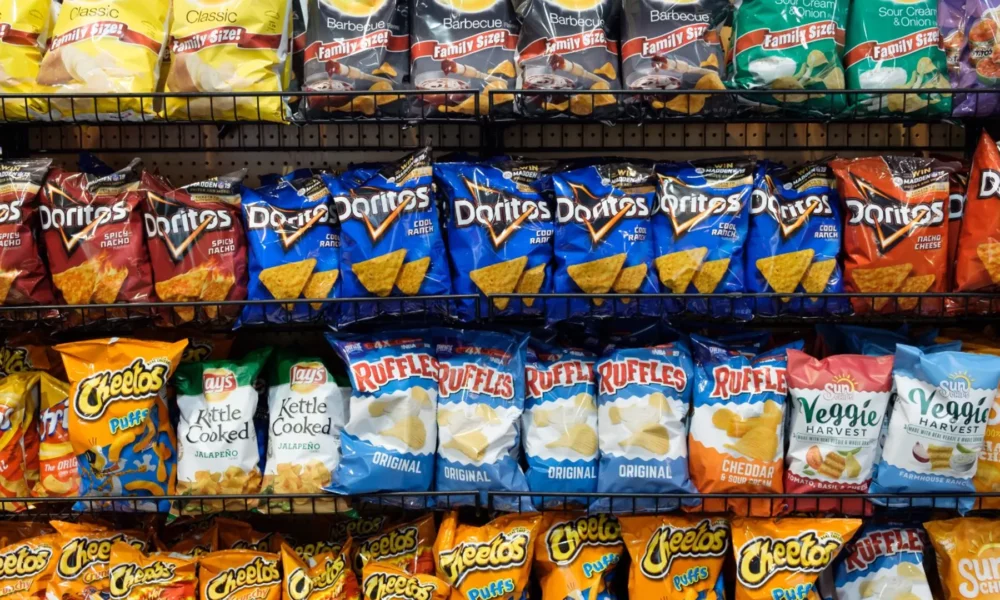Sustainable Solutions in Snack Packaging

For many, snack time is a daily ritual – a quick pick-me-up or a satisfying treat. But the convenience of pre-packaged snacks often comes at a hidden cost: environmental damage caused by excessive and unsustainable types of food packaging. The global snack food industry is booming, and with it, the mountains of plastic waste generated from chip bags, candy wrappers, and other snack containers. These non-biodegradable materials clog landfills, pollute our oceans, and threaten wildlife.
The good news? There’s a growing movement towards sustainable solutions in snack packaging. This shift is driven not only by environmental concerns but also by a rising generation of eco-conscious consumers who demand more responsible practices from the brands they support.
This article dives into the world of sustainable snack packaging, exploring the problems with traditional methods, innovative alternatives, and the benefits for both the planet and brands. But first, let’s take a closer look at the materials commonly used in snack packaging today. Ever wondered what are crisp packets made from? A quick web search can reveal some surprising details about their composition.
The Problem with Conventional Snack Packaging
The convenience of grabbing a pre-packaged snack often comes wrapped in a complex mix of types of packaging materials for food – plastic films, aluminum foil liners, and sometimes even cardboard sleeves. This creates a significant environmental burden:
- Plastic Domination: The majority of snack packaging relies heavily on plastic, a non-biodegradable material derived from fossil fuels. Plastic waste ends up in landfills for centuries, leaks harmful chemicals into the environment, and poses a serious threat to wildlife that ingest it.
- Recycling Challenges: Even when packaging incorporates recyclable materials, it’s often a complex mix that requires special sorting facilities. Many communities lack the infrastructure to handle these complex materials, leading them to end up in landfills alongside non-recyclables.
- Environmental Footprint: The production and transportation of conventional packaging materials like plastic require significant energy and resources, contributing to greenhouse gas emissions and climate change.
These problems highlight the urgent need for a shift towards sustainable packaging solutions for the snack industry.
Sustainable Packaging Solutions: A Greener Snacking Experience
The good news is that there’s a wave of innovation happening in the world of types of product packaging, specifically for snacks. These solutions prioritize renewable resources, recyclability, and biodegradability, offering a more sustainable alternative to traditional methods. Let’s explore some of the most promising options:
- Bioplastics: Made from plant-based materials like corn starch or cellulose, bioplastics offer a more eco-friendly alternative to traditional plastics. They can be composted in industrial facilities or even designed to biodegrade naturally under the right conditions. However, bioplastics aren’t a perfect solution yet. Some require specific composting conditions not available in most home settings, and their production can still have environmental impacts.
- Compostable Materials: Imagine munching on your favorite chips while knowing the bag will break down naturally along with your food scraps. That’s the promise of compostable packaging made from materials like bagasse (sugarcane fiber), bamboo, or even mushroom mycelium. These materials decompose in commercial composting facilities, turning into nutrient-rich soil.
- Minimalist Packaging: Sometimes, less is truly more. Minimalist packaging focuses on using the least amount of material possible to protect the snack while still maintaining freshness. This can involve using thinner, yet durable, packaging films or designing containers that eliminate unnecessary layers.
- Edible Coatings and Wrappers: This futuristic concept is gaining traction. Imagine a seaweed-based wrapper for your seaweed snacks or a dissolvable sugar coating for your dried fruit. Edible coatings and wrappers made from natural ingredients could eliminate packaging waste altogether.
- Reusable Packaging: Think reusable snack bags or refillable containers for your favorite dry snacks. While not always convenient for on-the-go situations, reusable packaging offers a long-term solution for reducing single-use waste.
These are just a few examples, and the field of sustainable snack packaging is constantly evolving. The key takeaway? There are solutions out there that can satisfy our snack cravings without sacrificing the health of our planet.
Benefits of Sustainable Snack Packaging: A Win-Win for All
The shift towards sustainable snack packaging offers a multitude of benefits, extending beyond environmental protection:
- Reduced Waste and Environmental Impact: Sustainable packaging solutions like compostable materials and bioplastics significantly reduce waste going to landfills and polluting our environment. This leads to cleaner oceans, healthier ecosystems, and a smaller carbon footprint for the snack industry.
- Enhanced Brand Image: Consumers are increasingly making purchasing decisions based on a brand’s commitment to sustainability. By adopting eco-friendly packaging, snack companies can differentiate themselves from competitors and build a positive brand image among environmentally conscious consumers.
- Potential Cost Savings: While the initial investment in sustainable packaging might be higher, long-term cost savings are possible. As consumer demand for sustainable products grows, the production of eco-friendly materials will become more efficient, leading to lower costs.
- Improved Product Shelf Life: Many sustainable packaging solutions offer comparable or even better protection for snacks compared to traditional methods. Bioplastics and compostable materials can be designed to maintain freshness and prevent food spoilage, ensuring a higher quality product for consumers.
However, the path towards widespread adoption of sustainable snack packaging isn’t without its challenges.
Conclusion
The movement towards sustainable snack packaging is a positive step towards a healthier planet. It’s a win-win situation, offering environmental benefits, potential cost savings for brands, and a chance for consumers to make a positive impact with every snack they enjoy.
However, achieving widespread adoption requires a shared responsibility. Brands need to invest in sustainable solutions, governments must create supportive policies, and consumers must be educated and empowered to make informed choices.
By working together, we can ensure that future generations can enjoy their favorite snacks without leaving a mountain of plastic waste in their wake. So, the next time you reach for a snack, take a moment to consider the packaging. Does it reflect a commitment to sustainability? By supporting brands that prioritize eco-friendly solutions, you can play your part in creating a more sustainable future, one delicious bite at a time.





